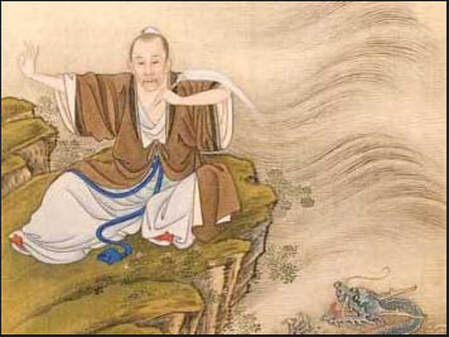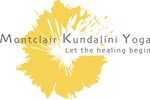 The Eight Brocades is a real blessing for millions of people all over the world. The movements are beautifully silken, like intricate brocade. After practicing, it feels as if you are wearing a robe of rich, soft, silk fabric: This is the Qi(Chi) or Prana that flows through the subtle channels in and around the body, brightening and strengthening the radiant body, which in turn strengthens, protects, heals and sustains the physical body. Eight Brocade Qigong is one of the most common forms of Qigong in the world and is probably the simplest Qigong one can learn. It is focused on opening the muscles and tendons and healing and awakening the internal organ systems of the physical body. A simple search online describes people with physical problems, especially related to the lower body, who have had amazing benefits within 6-8 months of practicing this form. People who had difficulty with instability, who were prone to falling or unable to climb stairs or even walk a few steps were able to build up their energy body and physical body with the Eight Brocades to the point where they could walk several flights of stairs with relative ease. Even people with Parkinson’s disease have reported increased stability in the body, with pain and rigidity eased up by 50% or more. The Eight Brocades follow the principles of Traditional Chinese Medicine and are one of the most gentle and effective ways of working with the body. They calm the nervous system, improve circulation, build great strength and heal body, mind, and spirit. They correct physical and energetic imbalances of all kinds and optimally direct Qi throughout the body, removing blockages without the use of needles, herbs or massage. In fact, it is one of the best ways to strengthen the body and improve circulation. It also helps in balancing the vital functions and drives stagnant energy and toxins out of the system. The Eight Brocades also happens to be one of the oldest Qigong systems in Chinese history. It is first mentioned by name in the 12th century Stories Heard by Yijian, a collection of supernatural tales from the Song dynasty. Descriptions of the physical movements of the Eight Brocades, as well as their related medical applications, also show up in the Daoist encyclopedia, Pivot of the Way, also from the 12th century. But even earlier, these precise movements were described in the sixth century, in Cultivating Spirit and Extending Vitality Record, written by one of the great grandfathers of Daoism, Tao Hongjing, who lived between 456–536 BCE. Going back even further, thanks to recent archeological discoveries in China, we can see that the Eight Brocade exercises, though probably called by a different name, were being practiced as far back as the second century BCE as shown by some of the characters from the Diagram of Leading and Pulling, from 168 BCE. The Eight Brocades seem to have grown in popularity during the Ming Dynasty (1368-1644), appearing in a fairly standardized way in numerous books, such as the 14th century Essentials of Attaining Longevity, written by the painter, musician, and Daoist hermit Leng Qian in the 12th century, as well as in the 16th century Eight Treasuries on Nurturing Life, written by the Daoist playwright Gao Lian. In both contexts it is praised as an essential practice for balancing the energies of the body. The famous, undefeated martial artist and general Yue Fei, who was also a calligrapher and poet, held off China’s enemies single-handedly in the 10th century, for an entire generation. The Eight Brocades was said to be the secret of his incredible strength. In one of the narratives about the Eight Brocades, Zhong Li Quan, one of the famous Eight Daoist Immortals, formalized the Eight Brocades in the 14th century. Then it further caught on in the Qing Dynasty (1644-1912). The French Jesuit missionary Pierre-Martial Cibot came to the court of the Qing Emperor in the 1700s and published an essay in 1779, Instructions on the Kung Fu of Daoist Monks, which includes a number of drawings of Daoist monks performing what are clearly exercises from the Eight Brocades. Cibot’s article included a rundown of Daoist anatomy and the function of these movements, i.e. the restoration of proper circulation of energy. He even mentions that these exercises are performed to prepare the body for the alchemical process. The paper was widely circulated in Europe, and has come to be regarded as a source document on the Eight Brocades in the history of physiotherapy for the West, due to its influence on Pehr Henrik Ling (1766-1839), the father of Swedish Gymnastics. From there, the Eight Brocades seeped into Modern European physical culture and was practiced by the military of many different countries, including the British army stationed in India, who practiced it alongside yoga. Today it is practiced as a modern, transnational, therapeutic form of moving meditation for health, healing, strength and well-being. The Chinese Communist Party tried to curb the global explosion of QiGong toward the end of the 1990s, delegitimizing many forms of Qigong, famously imprisoning and even executing practitioners of Falon Gong and other forms QiGong. I have seen many human rights protests in Times Square led by Falon Gong and Falon Dafa practitioners within the last few years while working in New York. The Eight Brocades, luckily, were approved by the Chinese Communist Party and is often a first resort for healing the body, prescribed before sending a patient to a doctor or hospital in China. It is perhaps the most common form of Qigong practiced all around the world. The Eight Brocades, when practiced regularly, improve wellness, fitness, vitality, healing, and longevity. It can be practiced by everyone; young and elderly, people who are fit and also those looking to get fit. The standing sets of the Eight Brocades can be learned by anyone who can stand, and can establish health in as little as 15 minutes a day. I have been practicing the Eight Brocades daily for many years now and can attest to their efficacy. I very much look forward to sharing them with you. Join Savitri online on Fridays at 1pm for Chi-Gung & the Eight Brocades.
3 Comments
|
Categories
All
|
Location127 Valley Road
Montclair, NJ |
|

 RSS Feed
RSS Feed